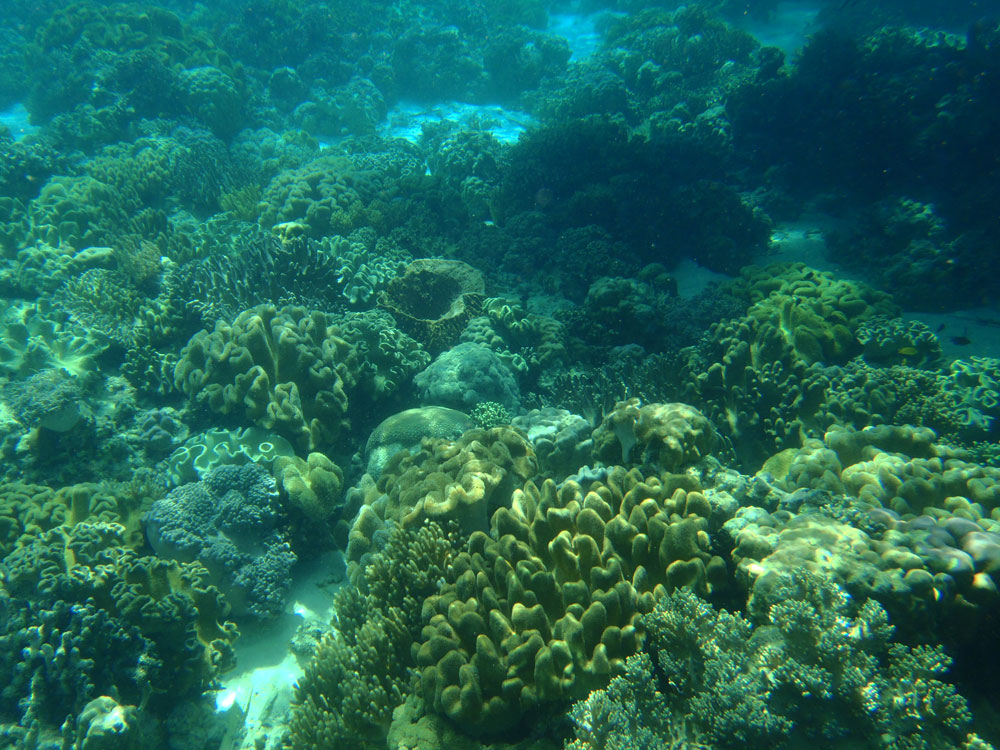 When people talk of diving in Cebu, they usually mention the small town of Moalboal in the province’s southwestern coast that is famous for the thousands of sardines that have come to populate its seas.
When people talk of diving in Cebu, they usually mention the small town of Moalboal in the province’s southwestern coast that is famous for the thousands of sardines that have come to populate its seas.
Italian Sergio Forti, who manages a dive resort named Sampaguita in Moalboal’s Panagsama Beach or what they call Bas Diot (Cebuano words that literally translate to “few sand”), said the sardines arrive in and leave Moalboal as part of their normal migration process but they’ve come to stay for good around three years ago.
“Sardines are always migrating but they’ve been in the town for some time. Biologists couldn’t explain why. They say that let’s enjoy them while they’re still around,” he added.
This big school of sardines has become a fixture in the depths off Pescador, a small island a short distance away from Moalboal, and is attracting bigger species of fish like thresher sharks and mackerel.
Marine life
Before the sardines, however, the town has already been a popular destination of scuba divers because of its well-kept corals, which come in several shapes and colors, as well as the big variety of fish
and other kinds of marine life in its seas.
Forti said aside from Pescador, the whole Moalboal peninsula is a diving spot. His dive resort offers open water dive lessons for US$250 and charges US$55 for a one-hour dive that comes with a boat and equipment as well as guide. Here is a nice watersports blog that suggest everything that has to be followed to enjoy diving at the fullest.
The Sampaguita Resort opened in 2003 and has 17 rooms plus diving facilities, said Forti, who first came to the town to dive in 1993. Just a few meters off Sampaguita is a dive spot named after it.
Aside from Sampaguita and Pescador Island, there are 12 other dive spots in the town, said the Turtle Bay Dive Resort, which is also on Panagsama Beach. Panagsama is around five kilometers away from the town center.
Dive spots
Turtle Bay describes the slopes and depths of the various dive spots at its website and dive center. Below is a description of three of the sites.
Talisay Wall in Bas Diot
This dive spot is a slope with wall and divers can see batfish, mackerel, barracudas, turtles, yellow margin fish, and tigger fish in its depths.
Tongo Point in Bas Diot
The dive starts as a deep wall that goes down to endless depths. Caves along the reef hosts turtles as well as fusiliers, razorfish, leaf fish, harlequin ghost pipefish, and barracudas.
White Beach in Saavedra, Moalboal
This dive point descends 25 meters to a fish feeding area characterized by bucket sponges and big brown daisy corals. The spot hosts damsel fish, two-eyed coral fish, checkered snapper, red tooth
tigger, and turtles.
Abenido said that Pescador is the best of the town’s dive sites and is worth at least four dives.
Diving rates
The other diving areas are Marine Sanctuary, Airplane Wreck, Basdako Point, Dolphin House, Tuble Point, Kasai Wall, White House, Oscar Cave, and House Reef, said Nelson V. Abenido, who is the town’s vice mayor and owner of the dive center Ocean Safari Philippines.
Ocean Safari’s diving rates are: P800 per dive sans equipment and P1,100 with equipment, P17,000 for open water diving course with six hours of actual diving.
Turtle Bay, on the other hand, charges divers P1,350 if they have their own equipment and P1,700 if they don’t. Its open water diving lesson runs for four days and costs P18,700.
Another dive center, Seaquest, charges P1,350 for a single dive if the diver brings his own equipment and P1,650 if he has to use the dive center’s. The amount already includes sanctuary fee and boat. An open
water diving course at Sequest costs up to P18,450 and comes with nine dives in both the pool and sea.
Foreign clients
Of Moalboal’s 22 dive centers and resorts, Abenido said Ocean Safari is the only one that is owned by a local and with the cheapest rates.
He added that diving goes on all year round at Moalboal although the best times are during the summer months.
Leticia Redoble of Seaquest Dive Center said they have their share of local and foreign divers although foreigners make up the bulk of their clients.
Forti of Sampaguita said majority of his clients are Europeans and they come during August, which is vacation month in most countries in Europe.
Aside from diving, Moalboal is also known for its strip of white sand beach in Barangay Saavedra, which is about eight kilometers away from the town center. There are also dive centers in Bas Daku (translated as big sand) or White Beach although fewer than in Bas Diot.

